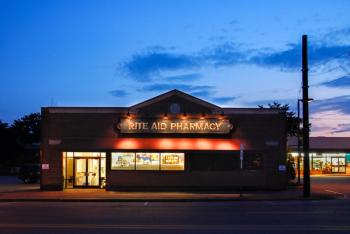
Living Near Noise Pollution Leads to Greater Heart Attack Risk, Study Results Show
Analysis is based on 2018 hospitalization rates of patients with cardiovascular disease in New Jersey.
The results of a study to be presented at the American College of Cardiology’s 71st Annual Scientific Session showed that individuals who experience high levels of noise from cars, planes, or trains were more likely to suffer a heart attack than those who live in quieter areas.
“When people talk about pollution, they're usually talking about particles in the air or water,” study lead author Abel E. Moreyra, MD, professor of medicine in the Division of Cardiology at Rutgers Robert Wood Johnson Medical School, said in a statement. "But there are other forms of pollution, and noise pollution is 1 of these."
The study analyzed heart attack rates among approximately 16,000 New Jersey residents hospitalized for heart attacks in 2018 using data from the MIDAS database, which is a repository of all cardiovascular hospitalizations in the state. Further, the investigators calculated the average daily transportation noise experienced at home using data from the state’s Bureau of Transportation Statistics.
The patients were split into 2 groups: those experiencing elevated levels of transportation noise (an average of 65 decibels or higher over the course of the day) and those with low noise exposure (a daily average of less than 50 decibels). To put that in perspective, a loud conversation or laughter is equivalent to 65 decibels.
Noise levels were average over the course of the day, and Moreyra said that many individuals may have experienced periods of relative quiet that were interrupted by louder bursts, such as aircraft, trains, or trucks going by.
The study results showed that 5% of hospitalizations for heart attacks were attributable to elevated high noise levels in the state. In places with high transportation noise exposure, the heart attack rate was 72% higher, with these areas having 3336 heart attacks per 100,000 people compared with 1938 heart attacks per 100,000 people in quieter areas. The investigators calculated that high noise exposure accounted for about 1 in 20 heart attacks in the state, because of the relative rates of heart attack in various locations.
This study is 1 of the first to examine heart disease and noise in the United States, but the findings support the results of several previous studies on this topic conducted in Europe, according to the study authors.
“As cardiologists, we are used to thinking about many traditional risk factors, such as smoking, hypertension, or diabetes,” Moreyra said. “This study and others suggest maybe we should start thinking about air pollution and noise pollution as additional risk factors for cardiovascular disease.”
Noise can cause chronic stress, emotional distress, and sleep disturbances, which can lead to severe effects on cardiovascular health, Moreyra said.
Chronic stress is connected to hormonal changes linked with changes in the blood vessels and inflammation that are associated with heart disease.
Further, living near transportation infrastructure can translate to greater exposure to vehicle exhaust and other forms of particulate air pollution.
“Air pollution and noise go hand-in-hand,” Moreyra said. “The question is: how much of this effect is due to particle pollution and how much is noise?”
Further research is suggested to investigate how noise pollution is connected to demographic, socioeconomic, or other health factors. The research team plans to examine the data in more detail for insight into which sources of transportation noise may have the greatest health impact.
Reference
Living near noise pollution tied to greater risk of heart attack. American College of Cardiology. News release. March 23, 2022. Accessed March 30, 2022.
Newsletter
Stay informed on drug updates, treatment guidelines, and pharmacy practice trends—subscribe to Pharmacy Times for weekly clinical insights.




















































































































































































































